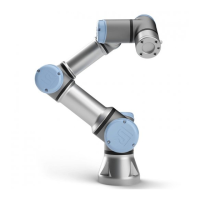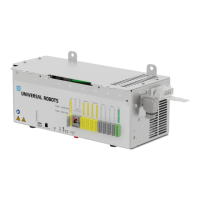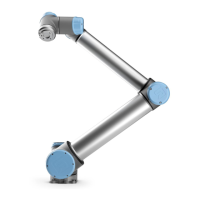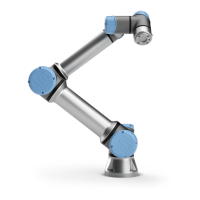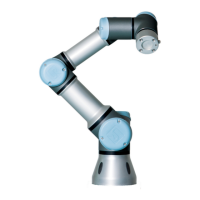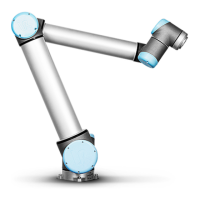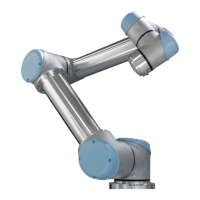15.12 Safety I/O
category 0 stop. The transition back to Normal mode happens in the same manner.
Note that safety planes can also cause a transition to Reduced mode (see 15.11.3
for more details).
• Safeguard Reset: If Safeguard Stop is wired in the safety I/Os, then Safeguard
Reset is used to ensure the Safeguard Stopped state continues until a reset is
triggered. The robot arm will not move when in Safeguard Stopped state.
WARNING:
By default, the Safeguard Reset input function is configured for
input pins 0 and 1. Disabling it altogether implies that the robot arm
ceases to be Safeguard Stopped as soon as the Safeguard Stop in-
put becomes high. In other words, without a Safeguard Reset
input, the Safeguard Stop inputs SI0 and SI1 (see the Hardware
Installation Manual) fully determine whether the Safeguard Stopped
state is active or not.
Output Signals For the output signals the following Safety functions can be applied.
All signals return to low when the state which triggered the high signal has ended:
• System Emergency Stop: Low signal is given when the safety system has
been triggered into an Emergency Stopped state. It is in a high signal state
otherwise.
• Robot Moving: A low signal is given whenever the robot arm is in a mobile
state. When the robot arm is in a fixed position, a high signal is given.
• Robot Not Stopping: When the robot arm has been requested to stop, some
time will pass from the request until the arm stops. During this time the signal
will be high. When the robot arm is moving and has not been requested to stop,
or when the robot arm is in a stopped position, the signal will be low.
• Reduced Mode: Sends a low signal when the robot arm is placed in Reduced
mode or if the safety input is configured with a Reduced Mode input and the
signal is currently low. Otherwise the signal is high.
• Not Reduced Mode: This is the inverse of the Reduced Mode defined above.
Version 3.1 (rev. 17782)
Copyright © 2009-2015 by Universal Robots A/S. All rights reserved.
II-111 CB3

